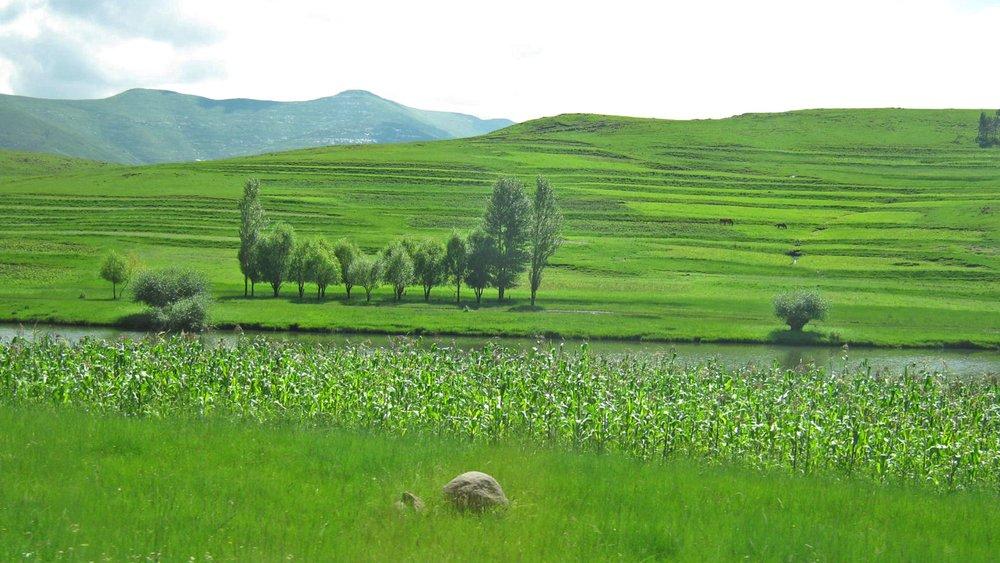Africa-Press – Lesotho. Soil analysis remains a valuable tool for farmers to determine inputs required for efficient production and the Agriculture Research unit of the Ministry of Agriculture is undertaking soil tests across the country.
The exercise is coupled with several research activities currently in progress. The research unit has advised farmers that the best time to avail soil samples for analyses is in winter after harvesting field crops and before planting new crops. However, for vegetables and other short cycle plants, soil analyses can be undertaken before introducing the next set of crops.
The ministry said the department is currently undertaking research studies on maize and bean varieties specifically, in a study which started in the 2018 summer planting season, and has seen the participation of many farmers using an on-farm approach.
The overall objective of the studies is to evaluate two bean cultivars for biological nitrogen fixation and two maize cultivars for nitrogen use efficiency, the department has said.
It said the study is done to restore the fertility of selected soils and crop productivity in an effort to help the farming community realise increased yields.
“It is known that nitrogen deficiency is among the most limiting factors for increased crop yield and management of nitrogen inputs is a major challenge for increased agricultural production.
Although application of inorganic fertilisers helps to address the limitations of essential nutrients, the Department said most resource-poor farmers cannot access the fertiliser due to financial constraints as they come at a high cost,” Agric Research says.
In Lesotho, the department says farmers fail to apply recommended fertiliser rates for grain due to high costs resulting in large yield gaps compared to yield potential.
For this study to take place, two bean varieties are being used (Pinto Nodak and NUA45, known locally as “lebete”) to determine the best variety in nitrogen (N) fixation and yields on farmer-managed fields and research stations.
The current findings, according to the study, indicate that Pinto Nodak has higher yields compared to NUA45 although the latter was found to be more nutritious in terms of iron (Fe) and Zinc (Zn) as compared to Pinto Nodak.
The protein content as reflected by the fact that total nitrogen in NUA45 grain was higher compared to Pinto Nodak, showing the higher efficiency of NUA45 in utilising the available N in the soil.
Farmers in both Machache and Sakoane where studies have already been made reported better organoleptic taste for NUA45. This may suggest that Pinto is better for food security (food quantity), while NUA45 could be better for nutritional quality.
As such farmers may need to produce both varieties to satisfy food and nutritional requirements. So far, the study shows that food and nutrition security benefits of bean varieties will be associated with soil fertility through biological nitrogen fixation. The final results of these studies will be released after the third summer cropping season of 2021, the department said.
Regarding maize production, the study has revealed that there is a need to improve productivity of the main staple crop through growing maize varieties that efficiently use nitrogen (N) for the benefit of farmers who usually apply insufficient fertiliser rates.
The two maize genotypes, ZM521 and ZM523 have been introduced to farmers in Lesotho because of their ability to tolerate drought. The department said both maize genotypes can produce high yields under water-stressed conditions and they are open pollinated varieties although they differ in maturity by 20 days, with ZM523 maturing later.
A second research study focuses on nitrogen use efficiency (NUE) and yields on farmer-managed crops and research stations. The study is carried out in the lowlands and in the foothills of Lesotho because maize generally performs better in these agro-ecological zones.
The current results reveal that ZM523 has higher grain yield compared to ZM521 although nitrogen use efficiency of the two varieties is almost the same.
For this reason, ZM523 could be recommended to farmers in the lowlands and foothills because of its ability to accumulate more Nitrogen in the whole plant which can benefit food, nutrition and environmental security, ensuring more food and feed availability to humans and livestock and NUE to avoid leaching of Nitrogen to the environment.






